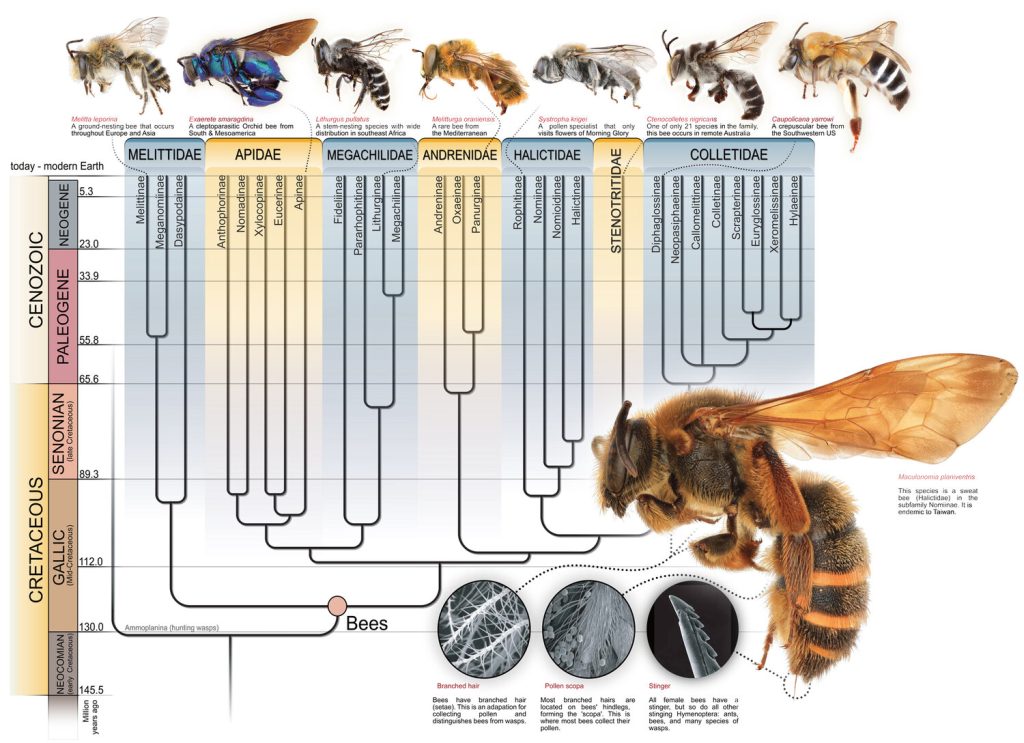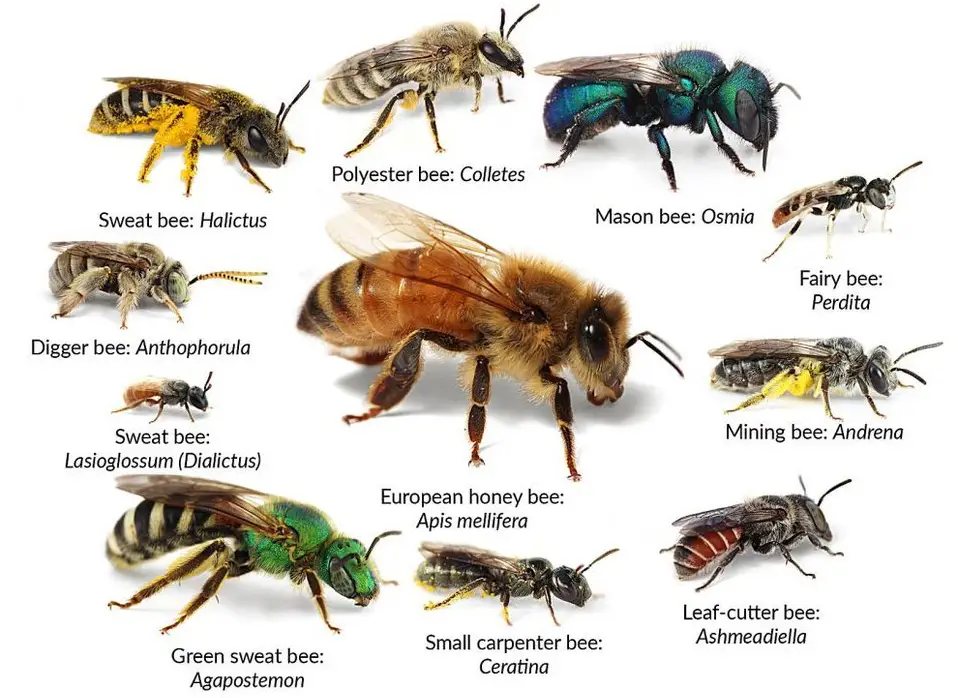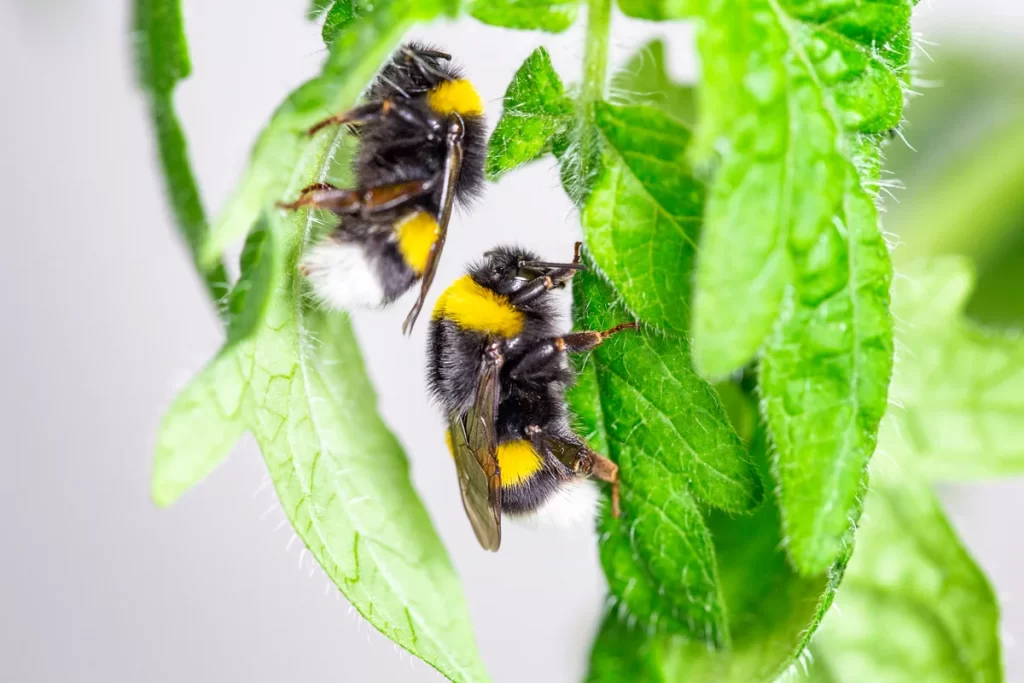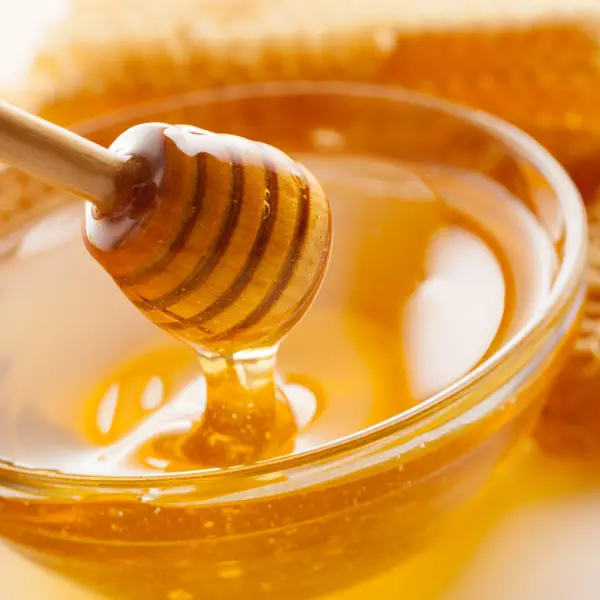Bees as a species are ancient, dating back over 135 million years to the Cretaceous era. Despite the presence of towering tree ferns and massive dinosaurs, the world at that time lacked the familiar buzz of bees and the colorful blooms of flowers. It was a silent, green landscape awaiting the arrival of a floral revolution that would soon introduce these pollinators and paint the ancient world with vibrant colors.

The Challenge of Plants: Wind, Pollen, and Inefficiency
Plants encounter a unique challenge in their quest for reproduction, especially given their immobility – how to exchange sex cells effectively. Delving back 135 million years into the past, when ancient landscapes dominated the Earth, wind emerged as the primary carrier for pollen. However, this method proved immensely inefficient, with the majority of pollen going to waste, either falling to the ground or drifting away. In its ever-adaptive course, nature sought a more reliable solution to ensure successful pollination. This quest for efficiency ultimately led to a pivotal evolutionary development: the emergence of insects as the first pollinators. These industrious creatures inadvertently became instrumental in facilitating the exchange of sex cells between plants, marking a transformative moment in the intricate dance of coexistence between flora and fauna.
The Emergence of Bees
Insects, enticed by the nutritious pollen, inadvertently assumed the role of crucial pollinators, seamlessly carrying pollen between flowers. This unintentional partnership sparked a significant transformation in plant reproduction, heralding the evolution of vibrant and attractive flowers that became the hallmark of Earth’s burgeoning floral landscape. Within this blossoming environment, bees emerged as unparalleled masters, boasting exceptional prowess in gathering nectar. Their role extended beyond mere pollination, as bees became architects of a new ecosystem, shaping the evolutionary trajectories of both plants and insects. The intricate dance between flowering plants and their newfound pollinator allies laid the foundation for a mutually beneficial relationship that would echo through the ages.

The Origins of Bees: From Wasps to Pollinators
Unveiling the origins of bees reveals a fascinating evolutionary journey, with these essential pollinators emerging from their distant relatives, the wasps, belonging to the Sphecidae family. Initially, these wasps adhered to a lifestyle of stocking their nests with deceased insects. However, nature’s innovative course saw a transformative shift as these wasps daringly experimented with incorporating pollen into their nest provisions. This pivotal moment in their evolutionary history marked the birth of bees, signifying a remarkable transition from predatory wasps to indispensable pollinators. This shift not only highlighted the adaptability of these insects but also played a crucial role in optimizing the efficiency of plant reproduction, setting the stage for the intricate dance between bees and flowering plants that would unfold over millions of years.
The Bee’s Journey Through Time
Embarking on the bee’s evolutionary journey through time unravels a captivating tale. Although the oldest known bee fossil hails from 80 million years ago, insightful DNA studies propose an earlier debut for bees around 130 million years ago. This expansive timeframe witnessed the bees’ remarkable diversification, with these industrious pollinators adapting various forms suited to their unique feeding habits on flowers. In the initial chapters of this ancient saga, solitary bee species took center stage, as each female diligently crafted her own nest, laying the groundwork for a legacy of individualistic nesting behavior that persisted throughout their early history.
The Bumblebee’s Arrival
Approximately 30 to 40 million years in the past, bumblebees stepped onto the evolutionary stage, flourishing in cooler temperatures. These distinctive pollinators had their origin in central Asia, where they set out on a remarkable journey that spanned continents. They traversed through Europe and Asia, establishing their presence before venturing across the Atlantic to colonize the Americas. Notably, their absence in tropical regions and the southern hemisphere can be attributed to their aversion to warm climates, highlighting their unique adaptation to cooler environments. This pioneering journey of bumblebees reflects their resilience and adaptability, as they carved out niches in diverse geographical landscapes across the globe.

A World Teeming with Diversity
In the present day, our planet showcases an incredible tapestry of life, featuring around 250 recognized bumblebee species and a staggering 25,000 bee species. Bees, alongside their cousins, ants, and wasps, form part of the triumphant insect order known as Hymenoptera, which stands as a testament to their collective success. Remarkably, these industrious insects are just a fraction of the vast insect kingdom, estimated to encompass a staggering 1 million species on Earth. This astounding diversity not only highlights the prolific nature of these tiny creatures but also underscores their integral role in shaping the intricate ecosystems that weave together the fabric of life on our planet.
The Threat of Extinction
In the current era, Earth is grappling with a concerning decline in biodiversity, witnessing a rapid extinction of species fueled by habitat destruction and the encroachment of invasive species. While the plight of larger mammals tends to seize our attention, the quiet disappearance of smaller creatures, particularly insects, poses a more imminent threat. Insects, often overlooked, are indispensable contributors to vital ecosystem services, notably pollination, playing an irreplaceable role in preserving the delicate balance of life on our planet. The alarming decline of these tiny yet crucial creatures underscores the urgent need for conservation efforts to safeguard the intricate web of life that depends on the often-unseen heroes of the insect world.
.


